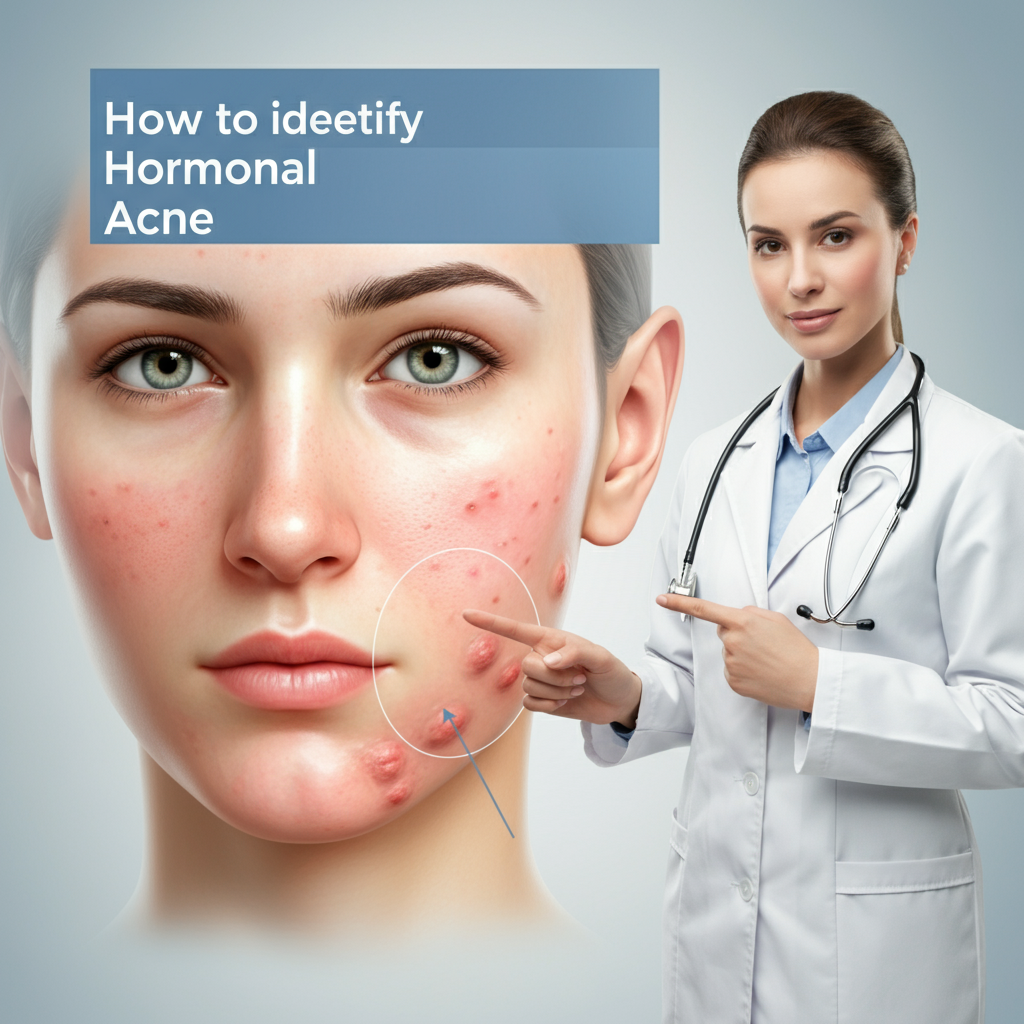Acne has a sneaky way of popping up just when you don’t want it to. But for many people, it’s not just a teenage problem. Hormonal acne, in particular, can strike at any stage of life, causing frustration and hitting self-esteem harder than any pimple cream can fix overnight.
This guide will help you understand why hormonal acne happens, how to identify it, and most importantly, what you can do to take control. Whether you’re a first-time sufferer or someone who’s been dealing with acne flare-ups for years, this comprehensive article will equip you with insights and actionable steps toward clear, healthy skin.
What Is Hormonal Acne
Hormonal acne is a type of acne caused by fluctuations in your hormone levels. It’s especially common during life stages involving hormonal changes, such as puberty, pregnancy, menstrual cycles, and menopause. However, hormonal acne isn’t confined to these phases; stress and underlying health issues can also tip the hormonal balance and trigger those pesky breakouts.
While hormonal acne can show up in different forms, cystic acne tends to dominate. These are those deep, painful pimples often resistant to topical treatments, which explains why many sufferers find hormonal acne particularly hard to manage.
Estimates show that up to 50% of women between 20 to 29 years old and 25% of women in their 40s experience hormonal acne. Men aren’t immune either, but the hormonal dynamics vary due to differences in testosterone production.
Primary areas impacted by hormonal acne
- Chin
- Jawline
- Neck
- Lower cheeks
Root Causes of Hormonal Acne
Acne’s root cause often lies in hormonal imbalances. Androgens (male hormones like testosterone) play a major role by overstimulating oil (sebum) production in the skin, which clogs pores and creates a breeding ground for acne-causing bacteria.
Common hormonal triggers include
- Menstrual cycles: Rising estrogen and progesterone levels can exacerbate acne during specific phases.
- Stress: Increased cortisol can throw all hormones out of whack.
- Polycystic Ovary Syndrome (PCOS): This condition often causes elevated androgen levels, which can manifest as persistent acne.
- Pregnancy and Post-Partum Changes: Hormonal shifts during and after pregnancy frequently trigger acne flare-ups.
Hormonal Acne Across Diverse Skin Types
Your skin type plays a big role in how hormonal acne manifests and responds to treatment.
Oily skin
People with oily skin often experience more pronounced breakouts due to the abundance of sebum combined with high hormone levels.
Dry skin
Dry skin sufferers might find hormonal acne triggers redness and irritation, making blemishes more noticeable and harder to treat.
Combination skin
Presents a mixed challenge as some areas may overproduce oil while others remain dry, requiring a highly tailored treatment approach.
Ethnic Skin and Hormonal Acne
Managing hormonal acne in ethnic skin comes with unique challenges. For example, deeper skin tones tend to experience post-inflammatory hyperpigmentation (PIH), leaving behind stubborn dark spots after acne heals. Additionally, keloid and hypertrophic scarring are more prevalent among certain ethnicities.
Pro tips for ethnic skin
- Use products containing azelaic acid to reduce hyperpigmentation.
- Avoid overly harsh acne treatments to prevent PIH and irritation.
- Always consult a dermatologist who specializes in skin of color for a personalized plan.
How to Identify Hormonal Acne

You might be wondering, how do you know if it’s hormonal acne? Here are some common indicators to help identify this type of acne.
Symptoms of hormonal acne
- Breakouts that worsen during specific menstrual phases or in stressful situations.
- Blemishes consistently concentrated around the jawline, chin, or neck.
- Painful cystic nodules that seem to sit deep under the skin.
If you notice these symptoms persist despite using over-the-counter acne products, you may need to seek a formal diagnosis from a dermatologist.
Effective Treatments for Hormonal Acne
Not all acne treatments will work for hormonal acne, especially since it usually originates from within. Here is a breakdown of the most effective solutions.
Medical treatments
- Oral contraceptives: Pills like Yaz and Ortho Tri-Cyclen regulate hormonal fluctuations, reducing acne.
- Spironolactone: Often prescribed off-label to block androgen hormones.
- Isotretinoin (Accutane): For severe hormonal acne cases, this can be a game-changer.
- Topical retinoids: Encourage skin cell turnover to prevent clogged pores.
Over-the-counter options
- Benzoyl peroxide
- Salicylic acid
- Sulfur-based face masks for periodic detox
The Role of Diet and Lifestyle in Hormonal Acne
What you eat is just as important as what you put on your skin. Diet and lifestyle choices can significantly impact hormonal acne.
Foods to avoid
- High-glycemic foods like white bread and sugary snacks can trigger insulin spikes that worsen acne.
- Dairy products, especially skim milk, which might elevate hormone levels.
Foods to include
- Omega-3-rich foods like salmon and walnuts.
- Antioxidant-rich fruits and vegetables.
- Whole grains and fiber.
Additionally, incorporate stress-relief practices such as yoga or meditation, as reduced cortisol production can lower acne flare-ups.
Building an Effective Skincare Routine
An acne-proof skincare routine focuses on targeting breakouts while maintaining a healthy skin barrier.
A simple hormonal acne routine
- Cleanser: Use a gentle product with salicylic acid.
- Treatment (AM): Apply a benzoyl peroxide cream.
- Moisturizer: Lightweight, non-comedogenic options are ideal.
- Sunscreen (AM): Broad-spectrum SPF is non-negotiable.
- Treatment (PM): Alternate between retinoids or sulfur masks.
Is It Time To Consult A Dermatologist
Persistent acne that doesn’t respond to OTC products is often a sign that professional help may be needed. If nodules frequently appear or acne begins to scar, consulting a dermatologist can help create a tailored treatment plan.
5 Hormonal Acne Myths Busted
- Myth: Acne only happens in teenagers.
- Truth: Adult acne is more common than you might think.
- Myth: You can scrub acne away.
- Truth: Over-scrubbing irritates skin and worsens breakouts.
- Myth: Chocolate causes acne.
- Truth: While sugar is a culprit, dark chocolate may actually help skin thanks to antioxidants!
- Myth: Sunscreen causes acne.
- Truth: Non-comedogenic sunscreens do not clog pores.
- Myth: Popping pimples makes them go away faster.
- Truth: This often leads to scarring and takes longer to heal.
Real Stories Managing Hormonal Acne
Emma, a 35-year-old designer, started struggling with hormonal acne after her pregnancy. By switching to a clean diet and adding spironolactone under her dermatologist’s guidance, she transformed her skin in six months.
The Future of Hormonal Acne Treatment
New technologies such as AI-driven skincare diagnostics, bio-identical hormone treatments, and personalized prescription apps are paving the way for the future. Emerging therapies targeting specific hormone pathways are also promising to be game-changers.
Achieving Healthy Skin Balance
Hormonal acne can be frustrating, but understanding its root causes and exploring tailored strategies will make the process less daunting. By incorporating medical treatments, balancing your lifestyle, and maintaining a skincare routine, you’ll regain control of your skin and confidence.
Remember, if you’re struggling to see results, consult a dermatologist for specialized care.
